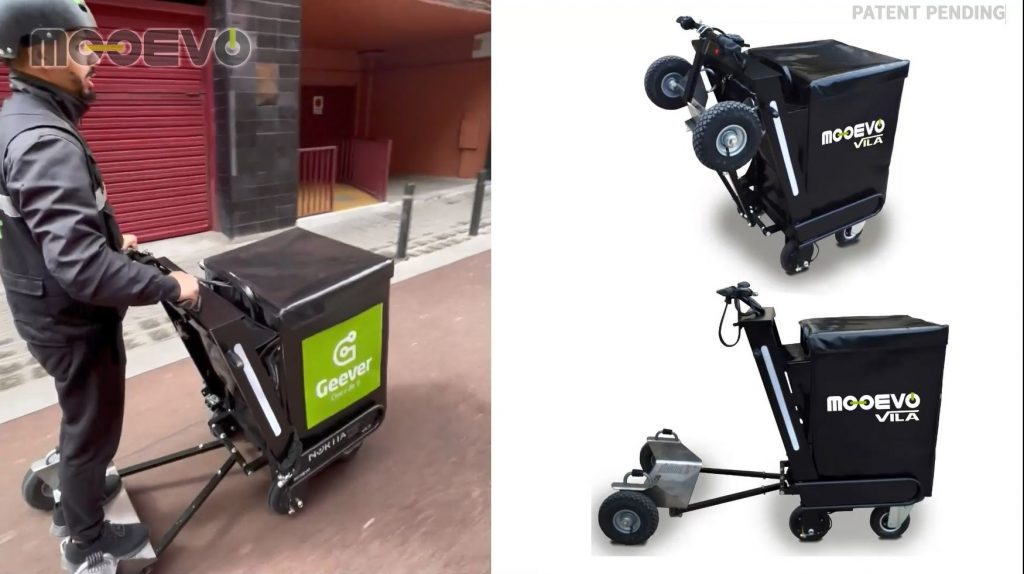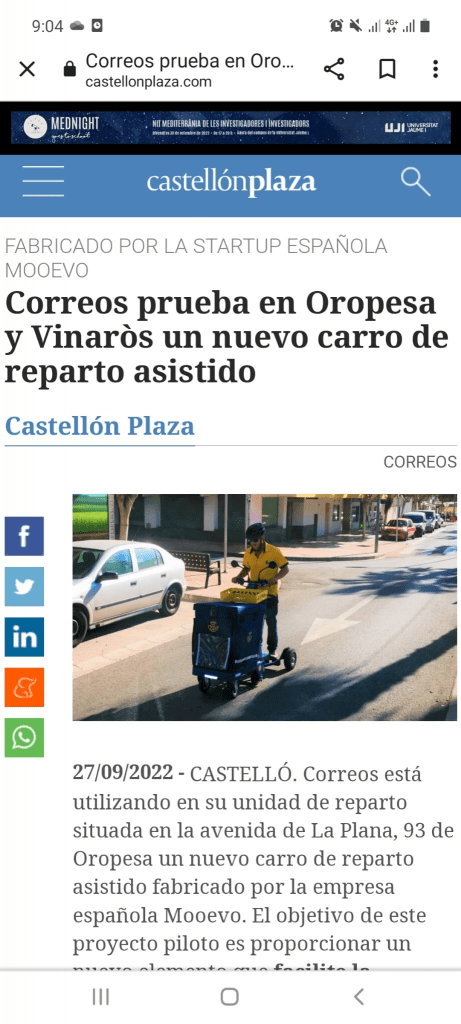Within urban mobility, the weight of goods distribution has grown exponentially in recent years. In 2019, its weight in total traffic in cities like Madrid was 38% and it is estimated that in 2025 this percentage will already be 47%, according to data managed by the Association of Manufacturers and Distributors. Last-mile delivery could bring traffic in major cities under control if measures are not put in place to address it.
The «last mile» is a term that refers to the last part of an order’s delivery process, since the package leaves the distribution point until it reaches the hands of the customer.
 Last Mile Delivery in Spain
Last Mile Delivery in Spain
Changes in consumer habits that had already taken place in previous years were accelerated by COVID-19. According to data from the National Markets and Competition Commission (CNMC), in Spain it increased by 13% in the first quarter of 2021, adding to the already 20% more that it had reached in 2020.
Last Mile Delivery in Spain
In 2021, 278,000 million euros were invested in logistics worldwide, i.e. 95,000 million more than in 2020, and the logistics surface absorption record was reached in Europe and the United States ( in the first, 28% above the historical average). These figures will continue to grow in the years to come, boosted by the rise of e-commerce which will also involve the provision of more storage space by multinationals to secure their supply chains.
 Last Mile Delivery Innovation in Spain
Last Mile Delivery Innovation in Spain
For consumers, sustainability is paramount. McKinsey experts confirm that over 70% of consumers would pay 5% more for quality, sustainably produced products. In addition, the sale of sustainable products in online markets has grown 5.6 times faster than the sale of products that are not, so it is essential to have their complicity to ensure that deliveries are made in the way as environmentally friendly as possible.
And speaking of sustainability, Manuel Pérez Romero, President of the IE Center for Sustainable Cities, explains it very clearly in the Last Mile Logistics Impact Index report: «We are not aware of the negative impact than a 24-hour dispatch to our lodge. Also, we don’t usually need a product within 24 hours. Certainly, we can wait in the vast majority of cases. These types of shipments do not optimize distribution and generate many inefficiencies and negative impacts and, in addition, picking it up at the neighborhood store or at a deposit would exponentially reduce the impact of logistics. We would remove many vehicles from the streets and their negative consequences.
In cities like Madrid and Barcelona, there are already vehicle restrictions in the center to minimize the environmental damage they generate. As there are also laws that prohibit the passage of these at certain times, which generates a greater concentration of cars at peak times and delays in the delivery of packages.
We are not aware of the negative impact that a 24-hour delivery to our home can have.
Only 25% of the Spanish provinces have legislation allowing night logistics, as indicated in the report Towards a sustainable model of urban distribution of goods in Spain, prepared by the Association of Manufacturers and Distributors (AECOC). Its normalization would imply an improvement in the efficiency of delivery processes, a decrease in emissions and a reduction in the kilometers traveled per operation due to the drastic reduction in traffic during these hours.
In addition to increasing overnight logistics, AECOC offers a more efficient model based on six axes: more flexible access to the city and unloading; digitization and regulation of loading and unloading areas; deployment of locker networks; use of big data; establishment of multi-purpose routes; and creation of platforms for consolidating the last mile and alternative modes of transport.
Find a tool to generate solutions
To prepare their report, IE and Prologis decided to analyze distribution behavior in Madrid and Barcelona. Then, “a specific proposal was made not only to reduce the impact of logistics in cities, but also to be able to produce a positive impact. Thus, we have developed the Logistic Intensity Areas (LIA), a system of rings with different levels of logistical intensity and which overlap the city to allow synchronization between the urban environment and the different models of the last mile”.